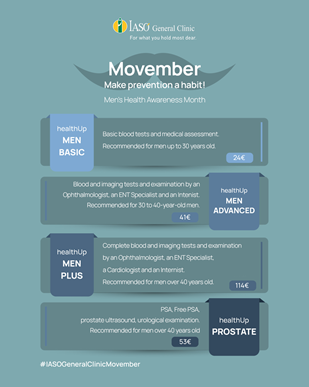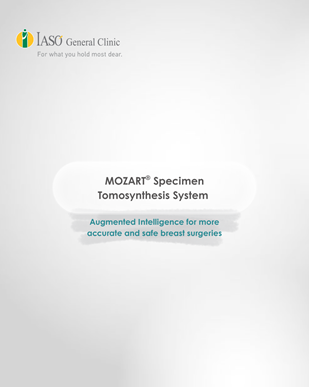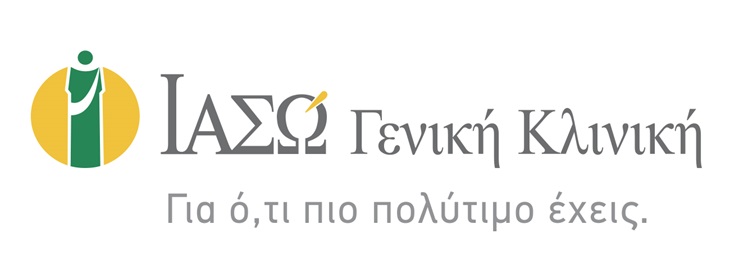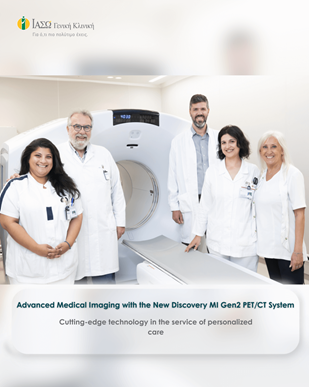
Neurology Department
Outpatient Department
IASO GENERAL CLINIC Hospital’s Adult Neurology Department provides diagnosis, treatment and follow-up of patients with acute or chronic symptoms of the central and peripheral nervous system. It also issues prescriptions for neurological medications and
referrals for special diagnostic tests (through national or private insurance). Furthermore, it can issue medical certificates for the Disability Certification Center (KEPA) and other legal uses.
The scientific staff of the Department
have long clinical experience and scientific training, and, provided it is deemed necessary, they also take on the admission and daily follow-up of patients requiring hospitalization for individualized investigation and treatment at the Neurology
Department.
It investigates and treats all neurological conditions related to:
1. The central nervous system
- Multiple sclerosis
- Cerebral vascular accident (stroke)
- Headaches
- Epilepsy
- Memory disorders, Dementia, Alzheimer’s disease
- Parkinson's disease
- Paraneoplastic syndromes
- Various types of tremor
- Dizziness and central vertigo
- Hydrocephalus
- Restless legs syndrome
- Infectious meningitis / encephalitis
- Infectious and other types of myelopathy
2. The peripheral nervous system
- Myasthenia
- Polyneuropathy (from chemotherapy or other causes)
- Postherpetic neuralgia
- Mononeuritis
- Facial nerve paralysis (Bell’s palsy)
- Trigeminal neuralgia
- Rhizopathy
- Myopathy
Neurophysiology Exams
Specialized tests which contribute to the diagnosis of patients with neurological symptoms are carried out.
These tests consist of:
-
Electromyography (EMG)
When a patient is experiencing numbness, weakness in an upper or lower limp, gait disturbances, dispersed muscle weakness or pain, the attending doctor will usually refer them to take an EMG. The purpose of this exam is to determine if there is indeed a nerve or muscle damage and locate its position and severity.
How is the test performed?
The test is performed by a neurologist and the result is given immediately to the patient at the end of the test.
By the use of low-voltage electrical current that is transmitted to the patient through surface electrodes, the functionality of the most basic peripheral nerves of the upper and lower extremities is checked (depending on the location of the possible damage).
The functionality of selected muscle groups is checked, by using a thin needle electrode. In this case, the patient is asked to perform a movement during the testing.
Is any preparation needed for taking the test?
When the patient arrives for the EMG, they should not wear very tight clothes and they should have clean and dry skin in the area which will be tested, without sunscreen or other oily creams. The duration of the test varies from 20 to 40 minutes, depending on the number of nerves and muscles which need to be examined in each case in order to complete the screening.
At the end of the test the patient can immediately continue their activities.
The test is not performed on patients wearing a pacemaker and before the test, the doctor must know if the patient is taking blood-thinning medications.
-
ELECTROENCEPHALOGRAM (EEG)
This diagnostic test records the electrical activity of the brain. It is a painless and bloodless test which can give a lot of information about brain function. It is mainly used in the diagnosis and monitoring of patients with epilepsy syndromes, but it is also useful for other brain disorders such as dementia, chronic headaches and even psychiatric disorders.
How is the test performed?
Surface electrodes are placed on the scalp and the activity recorded, is amplified and stored in the computer’s memory. During the test, the examinee must remain seated and still while some special tests are performed, the hyperventilation and photic stimulation tests. The whole duration of the test is approximately 30-45 minutes. It would be helpful for the examinee to know that after the end of the test they may need to wash their scalp to remove the cream that has been used for the proper application of the electrodes. The study and interpretation of the results are done at a later time by the expert Neurologist and therefore the result of the test is reported.
Is any preparation needed for taking the test?
The only preparation needed is for the patient to come and take the test with a clean scalp without additional hair sprays or gels, so the electrodes can be applied properly. In addition, it is advisable to avoid having caffeine or tea for 8 hours before the test, while also the patient normally takes his usual medication before and after the test.
Contact numbers:
Operating hours:
- Monday - Friday: 10:00 - 15:00











